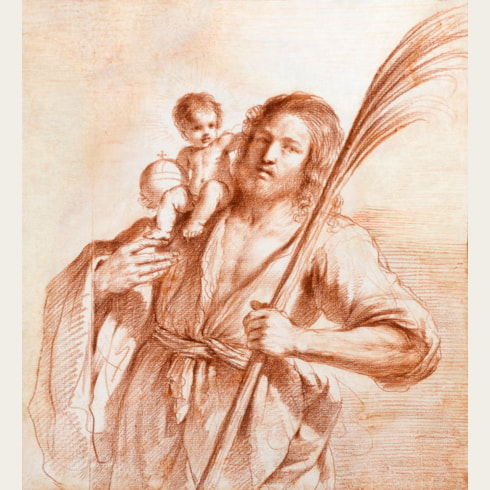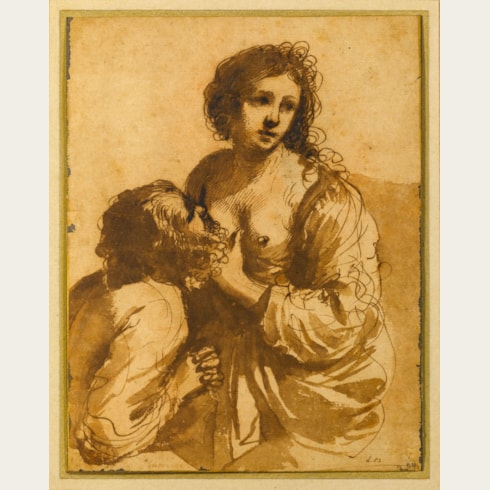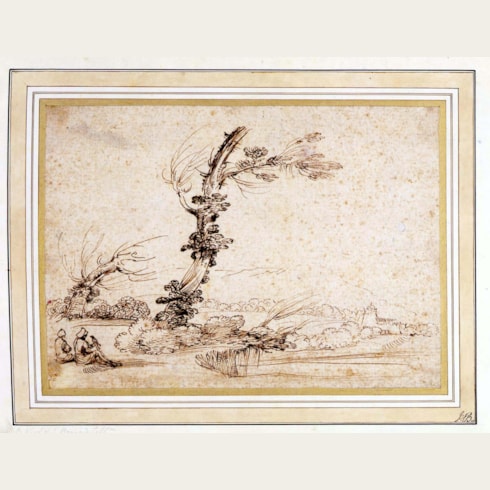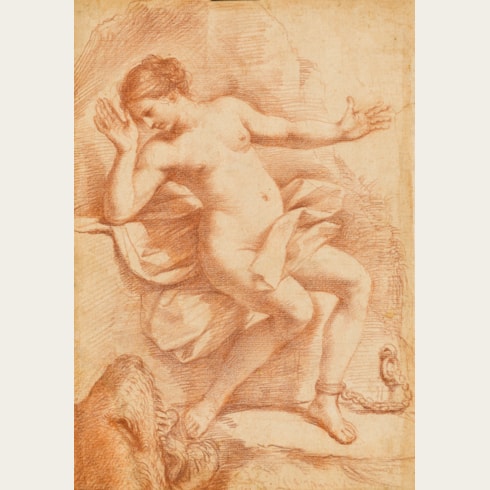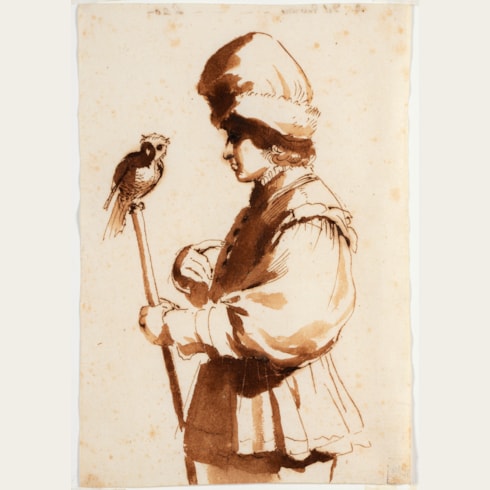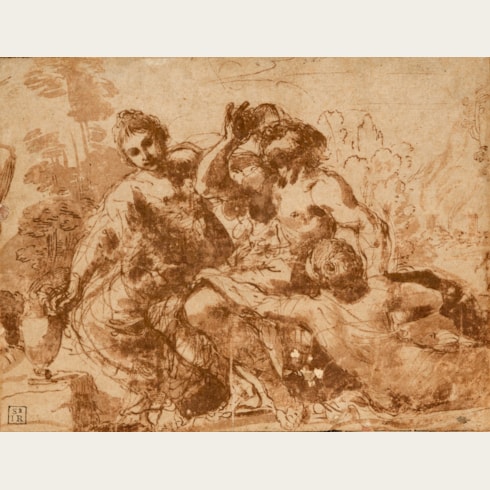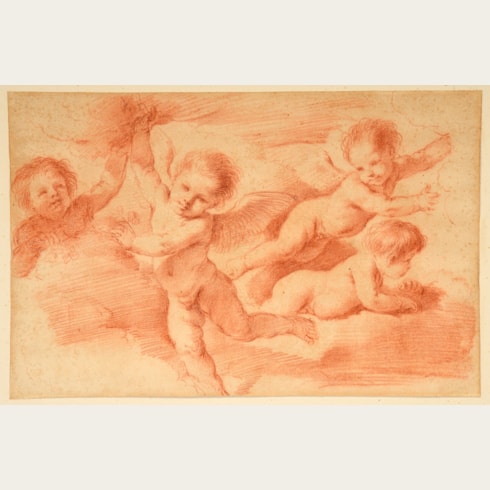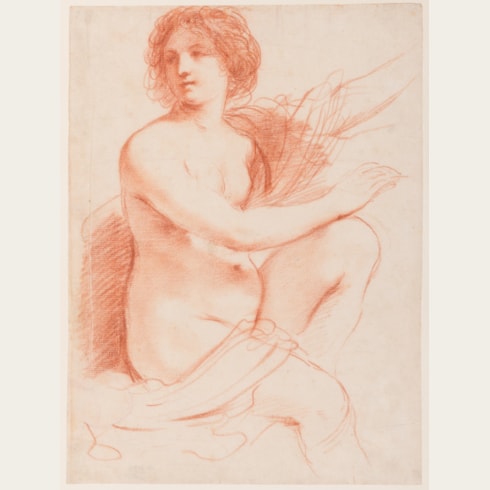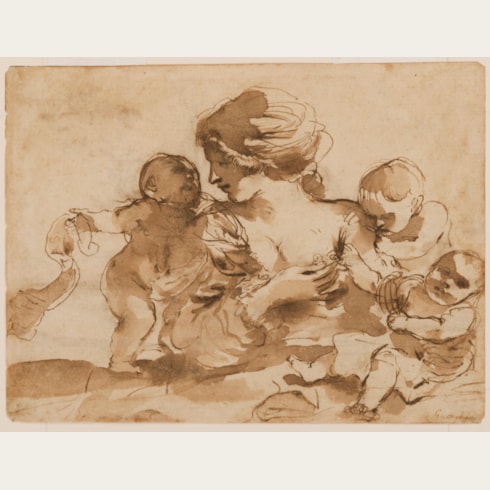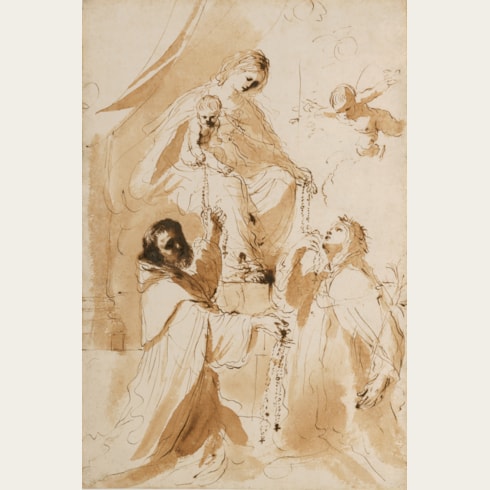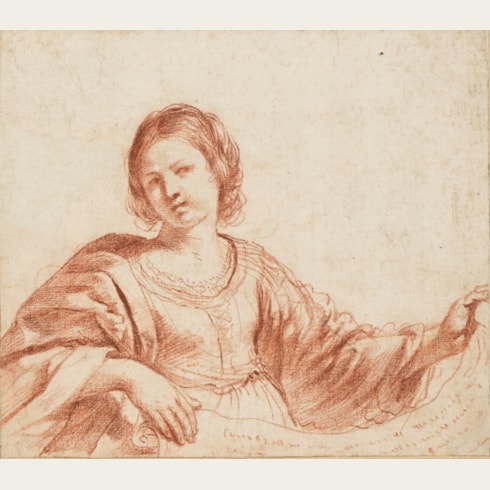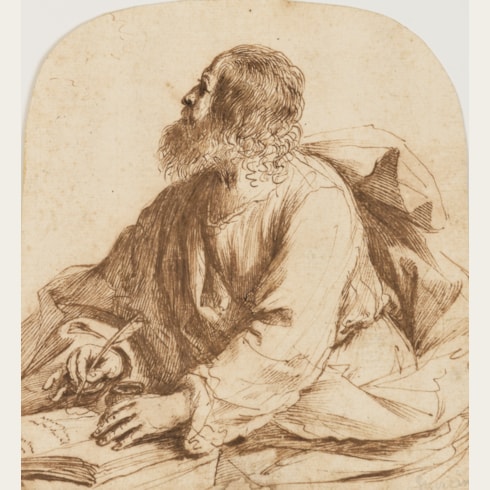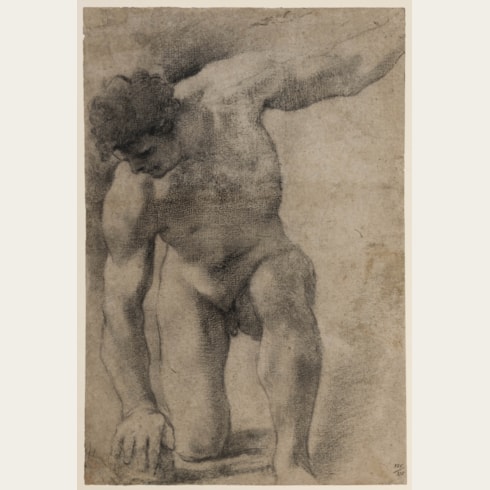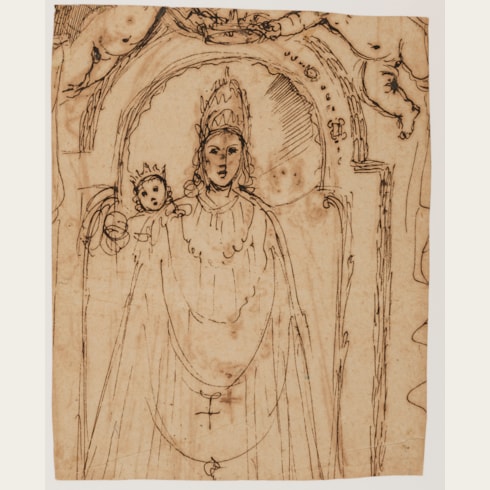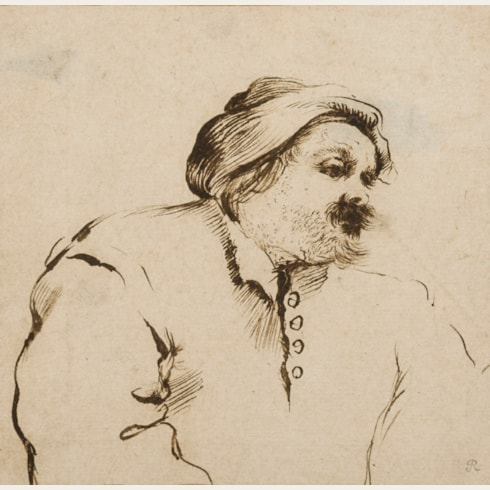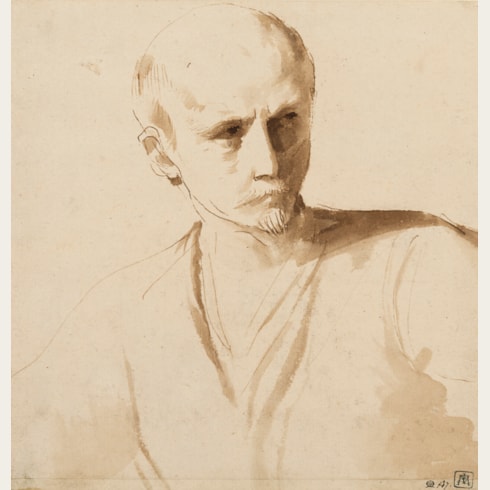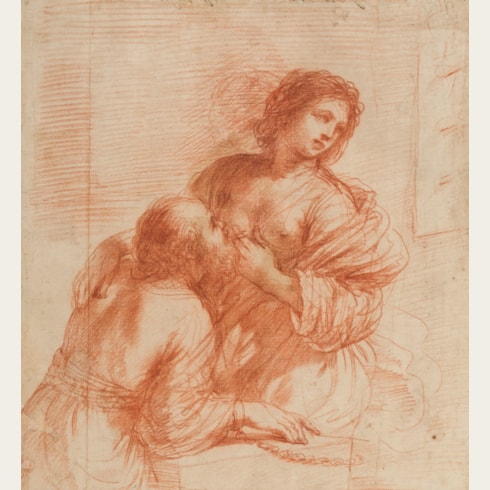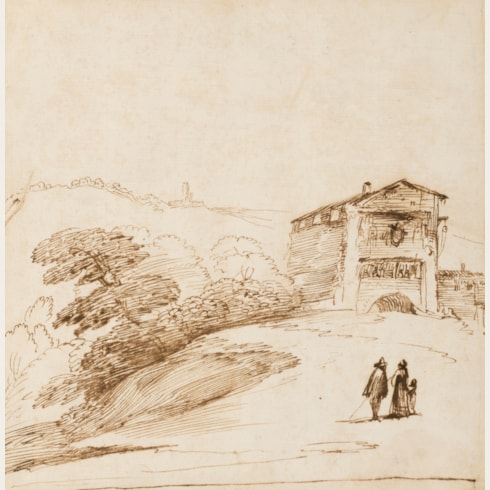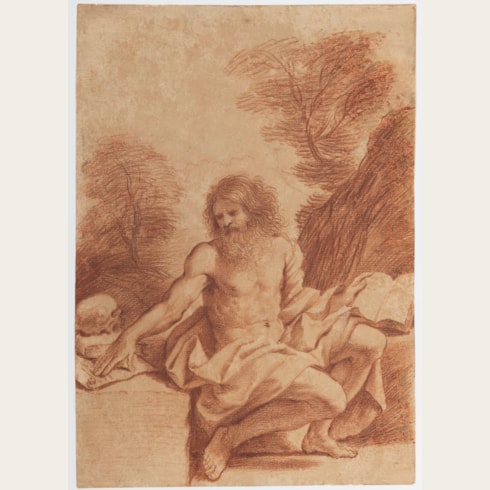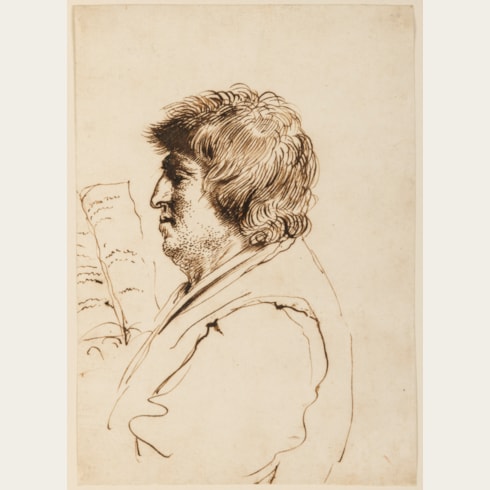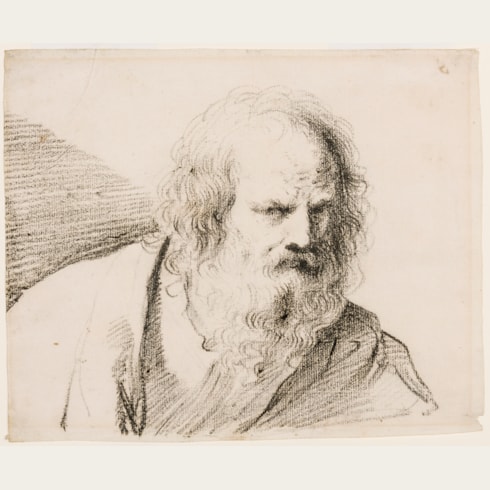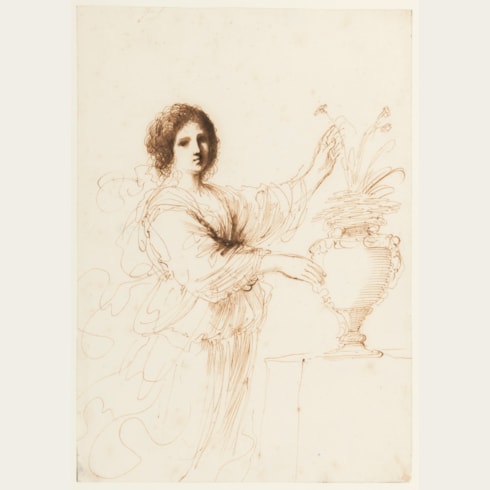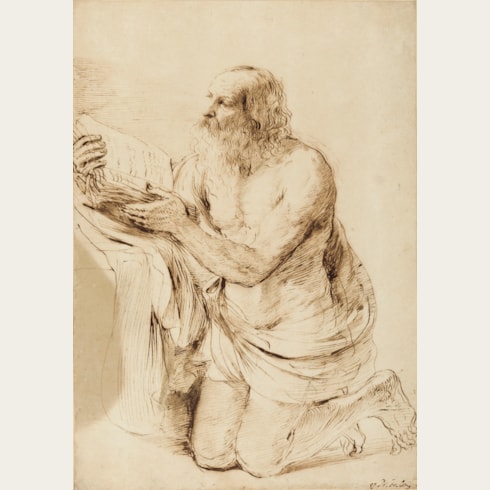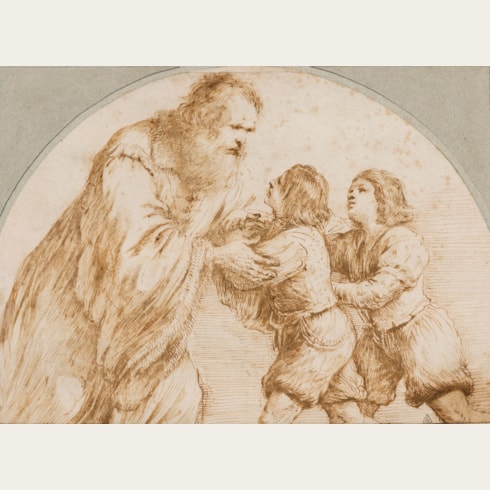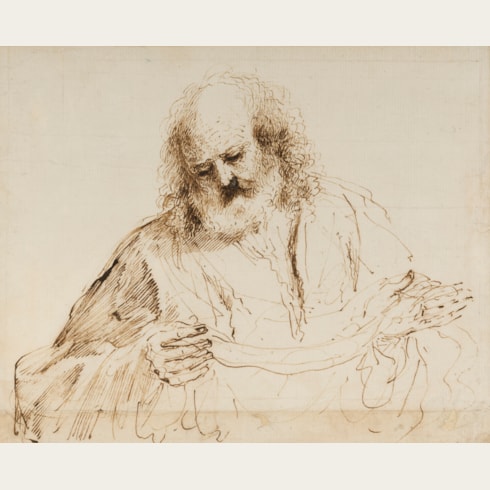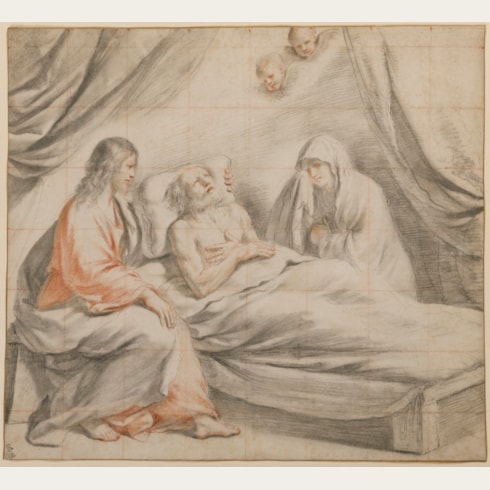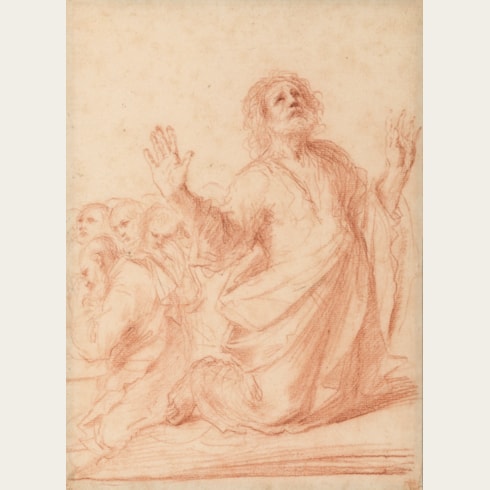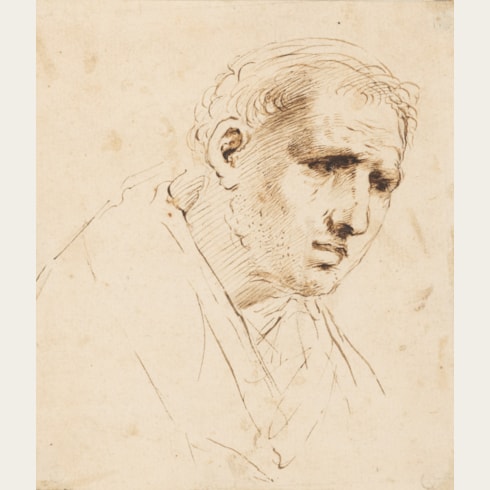Giovanni Francesco Barbieri GUERCINO
(Cento 1591 - Bologna 1666)
Hercules
Inscribed with the Casa Gennari numbering 12 Pr. Fo. at the lower left of the 18th century backing sheet.
Inscribed (by the Earls of Gainsborough?) Centaur and numbered 28 on the backing sheet.
183 x 170 mm. (7 1/4 x 6 5/8 in.)
ACQUIRED BY THE MINNEAPOLIS INSTITUTE OF ARTS, MINNEAPOLIS, MN.
Depicting Hercules wearing a lion-skin and with his club over his shoulder, this drawing, with its vigorous pen technique, provides a fine example of the ‘gustosa facilità’ for which the Bolognese biographer and art historian Carlo Cesare Malvasia praised Guercino’s drawings. As Nicholas Turner has written of the present sheet, the drawing ‘accords perfectly with Guercino’s emphatic pen-and-ink style of the 1640’s. Such pen studies are characterized by their strong darks – as in the head and beard of Hercules and in the areas of shadow at his side, at the back of his left arm and in the lion-skin hanging down his back – as well as by the precise, delicately rendered areas of parallel hatching to indicate half-tones – as in his chest, under his right forearm and in the head of the lion.’
Comparing this drawing with the finished painting, Turner further observes that ‘While the expression of Hercules’s face and the position of his head, as well as the angle of his club, are much the same in both works, his arms are significantly different. In the painting, Guercino gave the figure a more expansive pose within the compositional space – bringing down the right forearm and taking the left elbow further back. In the drawing, however, the artist has explored the contrast between the alert expression of Hercules, the man of action, and the grizzled, lifeless face of the lion, its two useless front legs hanging down limply. This latter motif is absent from the painting and instead a back paw is hitched over Hercules’s crooked left hand.’
Only one other drawing by Guercino may be related to the Koelliker painting; a drawing of Hercules with his club, drawn in black chalk, in the Ashmolean Museum in Oxford. The Ashmolean drawing must predate the present sheet, which is closer in pose to the figure of Hercules in the final painting. In all likelihood, Guercino must have produced other studies for the painting, which no longer survive.
Nicholas Turner has compared the present sheet, on stylistic grounds, with a series of pen drawings in the Royal Collection at Windsor Castle for another half-length figure painted by Guercino in the 1640’s; an Atlas of 1646, now in the Museo Bardini in Florence. The sequence of Atlas drawings at Windsor, as Turner notes, ‘share many of the abbreviations of robust, male anatomy as seen here [the present sheet], and other features, such as the intensely drawn squiggles, superimposed one above the other, for hair. Light penetrates the tangle of lines to give a sense of fluffiness to the curls, except in the case of darkest shadow.’
This important drawing by Guercino, hitherto unknown, retains its 18th century Bolognese mount. It was among a large and important group of studies by Guercino at one time in the Bouverie collection, described by one contemporary source as ‘perhaps the finest collection of Guercino’s drawings in England.’ This group of several hundred drawings by Guercino was acquired in Bologna, around the middle of the 1740’s, by the English collector John Bouverie (c.1723-1750), either directly from the artist’s heirs, the Gennari family, or through their agent, the Bolognese art dealer Francesco Forni. Forni may also have been responsible for mounting the more important drawings by Guercino in the collection, in a manner akin to the way in which this drawing was presented. The Guercino drawings in the Bouverie collection, including the present sheet, descended through the Bouverie, Barham and Noel familes to the Earls of Gainsborough, before being dispersed in several auctions in the 19th and early 20th centuries.
Giovanni Francesco Barbieri, known as Il Guercino (‘the squinter’) because he was cross-eyed, was by the second decade of the 17th century one of the leading painters in the province of Emilia. Born in Cento, a small town between Bologna and Ferrara, Guercino was largely self-taught, although his early work was strongly influenced by the paintings of Ludovico Carracci. In 1617 he was summoned to Bologna by Alessandro Ludovisi, the Cardinal Archbishop of Bologna, and there painted a number of important altarpieces, typified by the Saint William Receiving the Monastic Habit, painted in 1620 and now in the Pinacoteca Nazionale in Bologna. When Ludovisi was elected Pope Gregory XV in 1621, Guercino was summoned to Rome to work for the pontiff and his nephew, Cardinal Ludovico Ludovisi. It was in Rome that Guercino painted some of his most celebrated works, notably the ceiling fresco of Aurora in the Casino Ludovisi and the large altarpiece of The Burial and Reception into Heaven of Saint Petronilla for an altar in Saint Peter’s. The papacy of Gregory XV was short-lived, however, and on the death of the Pope in 1623 Guercino returned to his native Cento. He remained working in Cento for twenty years, though he continued to receive commissions from patrons throughout Italy and beyond, and turned down offers of employment at the royal courts in London and Paris. Following the death of Guido Reni in 1642, Guercino moved his studio to Bologna, where he received commissions for religious pictures of the sort that Reni had specialized in, and soon inherited his position as the leading painter in the city.
Guercino was among the most prolific draughtsmen of the 17th century in Italy, and his preferred medium was pen and brown ink, although he also worked in red chalk, black chalk, and charcoal. He appears to have assiduously kept his drawings throughout his long career, and to have only parted with a few of them. Indeed, more drawings by him survive today than by any other Italian artist of the period. On his death in 1666 all of the numerous surviving sheets in his studio passed to his nephews and heirs, the painters Benedetto and Cesare Gennari, known as the ‘Casa Gennari’.
The drawings of Guercino, which include figural and compositional studies, landscapes, caricatures and genre scenes, have always been coveted by later collectors and connoisseurs. Indeed, the 18th century amateur Pierre-Jean Mariette noted of the artist that ‘Ce peintre a outre cela une plume tout-à-faite séduisante’. The largest extant group of drawings by Guercino is today in the Royal Collection at Windsor Castle; these were acquired from the Gennari family by King George III’s librarian, Richard Dalton, between about 1758 and 1764.
Provenance
By descent to Giovan Francesco Gennari and his brother Filippo Antonio Gennari, Bologna
By descent to Giovan Francesco’s son, Carlo Gennari, Bologna
Possibly Francesco Forni, Bologna
Acquired with a large group of Guercino drawings in Bologna in c.1745 by John Bouverie, East Betchworth, Surrey
His sister, Anne Bouverie, London, until 1757
Her husband, John Hervey, until 1764
His son, Christopher Hervey, East Betchworth, Surrey, until 1786
His aunt, Elizabeth Bouverie, Barham Court, Teston, Kent, until 1798
By bequest to Sir Charles Middleton, later 1st Baron Barham, Barham Court, Kent, until 1813
His son-in-law, Sir Gerard Noel Noel, 2nd Baron Barham, until 1838
His son, Charles Noel, 3rd Baron Barham and later 1st Earl of Gainsborough
Thence by descent to Charles Noel, 3rd Earl of Gainsborough, Exton Park, Oakham, Rutlandshire
Probably his sale, London, Christie’s, 27 July 1922.
Literature





